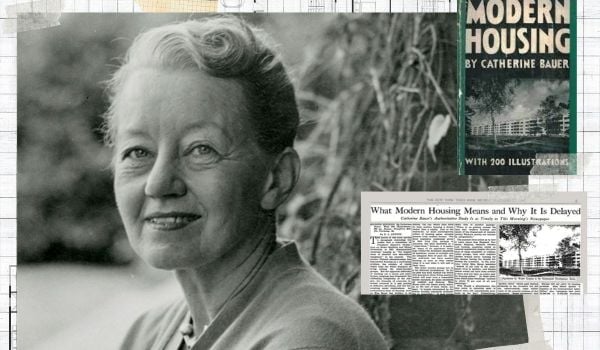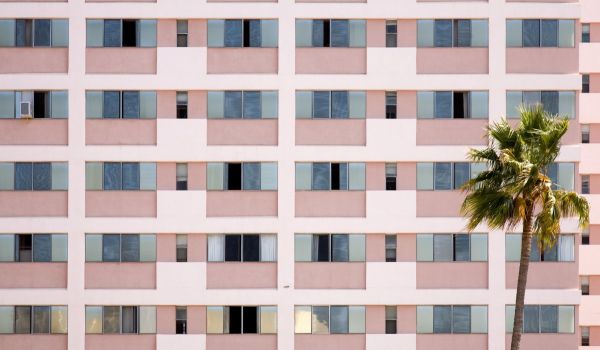Around this time last year, New York City Public Advocate Bill de Blasio, then a long-shot left-wing candidate for mayor, released his campaign housing platform. It called for the construction of 105,000 new subsidized apartments and houses over a hypothetical eight-year term, plus the preservation of at least 86,000 affordable units that would otherwise lapse into the city’s increasingly pricey market-rate housing sector.
Fast-forward one year, and yesterday morning, Mayor Bill de Blasio unveiled his affordable housing plan. The total number of units “created or preserved” is up from 191,000 to an even 200,000, though the mix has changed. Now, instead of building 105,000 new units, he’ll only promise 80,000; 120,000 subsidized units, on the other hand, will be retained. And rather than eight years, he’s giving himself 10 to do it, or two years longer than he’ll be in office if all goes well and he wins a second term. Overall, this works out to about 40 percent fewer new subsidized units built each year than he promised during the campaign.
In this sense, he’s taking a page out of the Michael Bloomberg playbook, backing down on promises. Bloomberg pledged 92,000 new units and 73,000 preserved when his plan was first unveiled in 2005, only to cut the new-build goal to around 50,000 and shift the remainder to the preservation column.
Another way de Blasio is emulating Bloomberg is in slow overall housing stock growth, despite both mayors’ rhetoric about the importance of construction and density. While the headlines focused on the number of units to be built or preserved using subsidies – the New York City political establishment generally thinks that subsidies and rent controls are the only way to moderate rents and housing prices, discounting the relevance of market-rate construction (or even seeing it as harmful) – the plan did put a number on market-rate construction: “New York City will need to add about 100,000 new market-rate units in addition to the 80,000 new affordable units.”
Put those two numbers together and you get 180,000 new units, on top of the roughly 3.4 million houses and apartments in the five boroughs today. This amounts to just a five percent growth in the city’s overall housing stock over 10 years, or about the same growth rate as the city saw under the Bloomberg administration.
Which is to say, not much. Five percent housing growth over 10 years puts New York City on par with the comparable parts of Paris in the first decade of the 21st century, and would mean slower growth than in the cities of Boston, Washington, DC, and San Francisco (to say nothing of boomtowns like Miami, Seattle and Denver).
De Blasio wrote just before being sworn in that he wanted to “speed” the construction of market-rate housing in the hopes of bringing rents down, and some commentators took him at his word and predicted a de Blasio-induced building boom. If his housing plan is to be believed, this was a mistake. In fact, far from speeding the construction of new market-rate housing, de Blasio’s plan assumes a slowdown.
Compared to the Bloomberg years, though, a much higher proportion of the new housing units created will be subsidized, according to the plan. De Blasio’s new-build affordable housing target is 60 percent higher than Bloomberg ended up with (and in two fewer years), even if it doesn’t quite measure up to what he promised on the campaign trail. And of those units, four times as many will be made available to the poorest class of working New Yorkers — which, for families of four, works out to those with incomes no greater than around $25,000 a year, with rents that don’t come near four digits.
The administration pegged the total cost of the building and preservation program at $41.1 billion over 10 years, with $8.2 billion coming from the city and the balance from the state, feds and private sources. Bloomberg’s plan had $5.3 billion in city funds and $23.6 billion overall.
Answers to some of the biggest questions — questions of place — were vague, with the Department of City Planning pledging to start work immediately on rezonings to accommodate the new construction. The plan cites corridors like Atlantic Avenue (much of which can support private, unsubsidized development), Fulton Avenue and Pitkin (which can’t) in Brooklyn as places that will see new development, but the exact mix of areas to be upzoned — whether they’re industrial (which engenders the least opposition but robs the city of land for jobs), commercial, residential (which is most politically difficult), or rail yards and highways (which are wildly expensive to deck over and build on) — is still up in the air.
The plan mentions asking the state to repeal its hard limit on residential density (the floor space of the housing portion of any building cannot go beyond a floor area ratio of 12, or 12 times the lot’s ground area), and wades into the political morass that is infill development on parking lots and other underutilized parts of public housing complexes. It briefly mentions looking into legalizing “informal” living arrangements in basements and above garages in the outer boroughs, and again calls for mandatory inclusionary zoning in areas that are rezoned — that is, zoning that requires developers to build some subsidized units to take advantage of additional density. It also mentions easing off-street parking requirements for affordable housing projects (which exist for projects beyond a certain size in virtually every corner of the outer boroughs), but doesn’t commit to doing the same for as-of-right projects without subsidized units.
The document put out by the administration also puts some numbers on the costs (both public and private) of building and saving each unit. Nearly $10.5 billion will cover the preservation of 120,000 below-market-rate apartments, while the cost of the 80,000 new units totals $30.6 billion. The fact that each preserved unit costs less than $90,000 while each new unit costs more than $380,000 raises the question of why any money is going toward new subsidized construction at all when the net effect — one household kept from the caprices of the market — is more or less the same.
The plan is also likely to disappoint those on the left who want the city to concentrate more on staunching the flow of below-market apartments out of the rent regulation system. While the administration is pledging to maintain the affordability of 120,000 units, this is a pretty weak goal in a city with more than one million rent-regulated units. The plan goes through the motions of calling for a “strengthened” rent-stabilization system and a repeal of the law that puts rent regulation in the hands of the state, not city. But compared to the all-out (and only partially successful) effort that de Blasio made to bend Albany’s will on universal pre-kindergarten, the calls for rent regulation reform look like the kind of lip service that every mayor engages in and none tries too hard to follow through on. At least one prominent council member gently chided the administration for not pushing harder on Albany.
In sum, the housing plan is slightly to the left of Bloomberg’s, but only slightly. It maintains housing production at its current low levels, while shifting construction away from market-rate housing and toward subsidized units. Assuming conservative nightmares of New York City slipping back into decline don’t pan out, supply will continue to fall even farther from demand, pushing market prices higher still, without any new rent regulation push to mitigate the damage. At the end of de Blasio’s desired eight years, even if the administration achieves its headline goals for construction and affordability preservation, the upward climb in average housing costs in New York City will not stop. Given that he’s only promising housing for a single-digit percentage of New Yorkers and little else for the rest, it’s hard to see how his housing plan “changes the lives of all New Yorkers for the better,” as the mayor said in his opening remarks.
The Works is made possible with the support of the Surdna Foundation.
Stephen J. Smith is a reporter based in New York. He has written about transportation, infrastructure and real estate for a variety of publications including New York Yimby, where he is currently an editor, Next City, City Lab and the New York Observer.

















